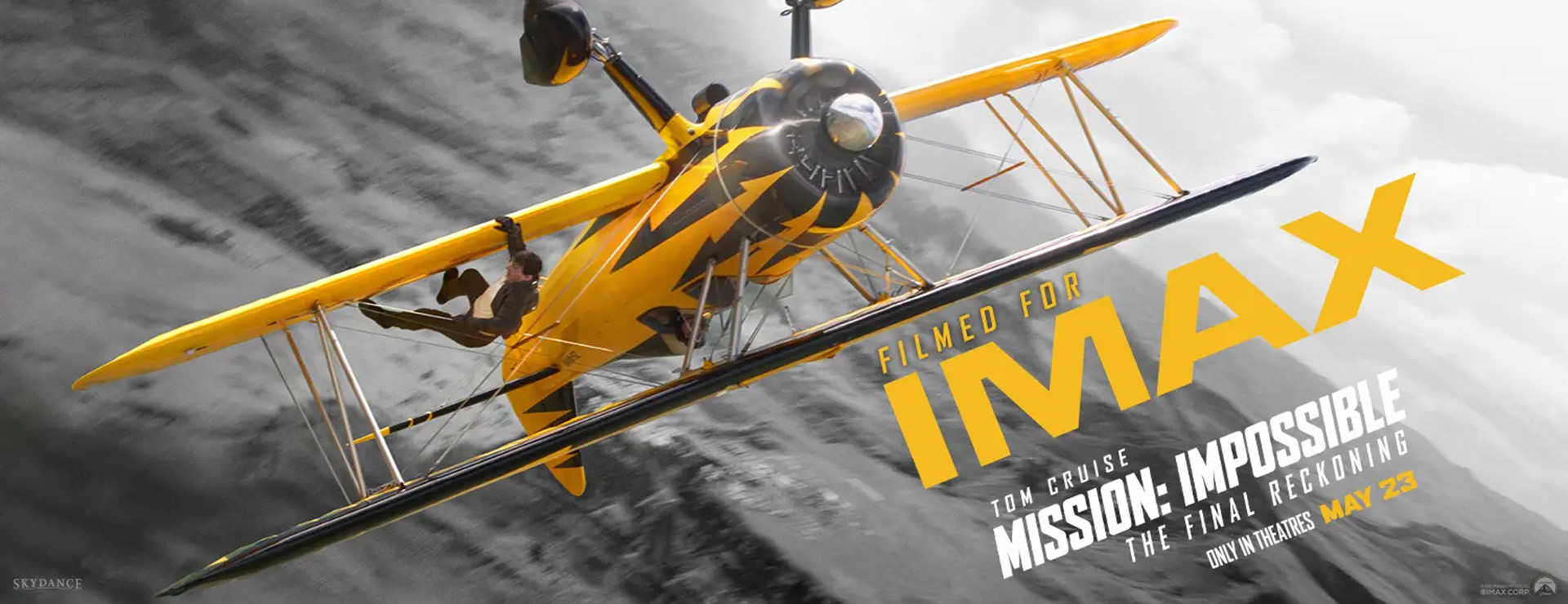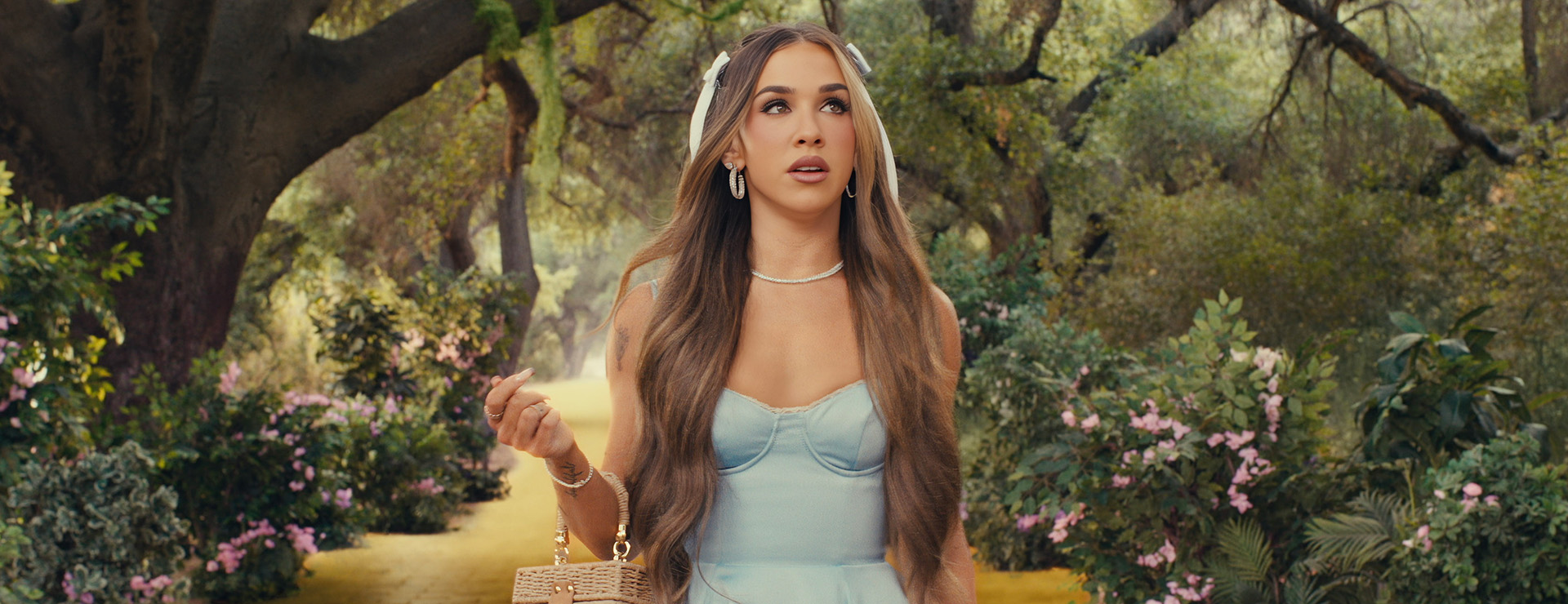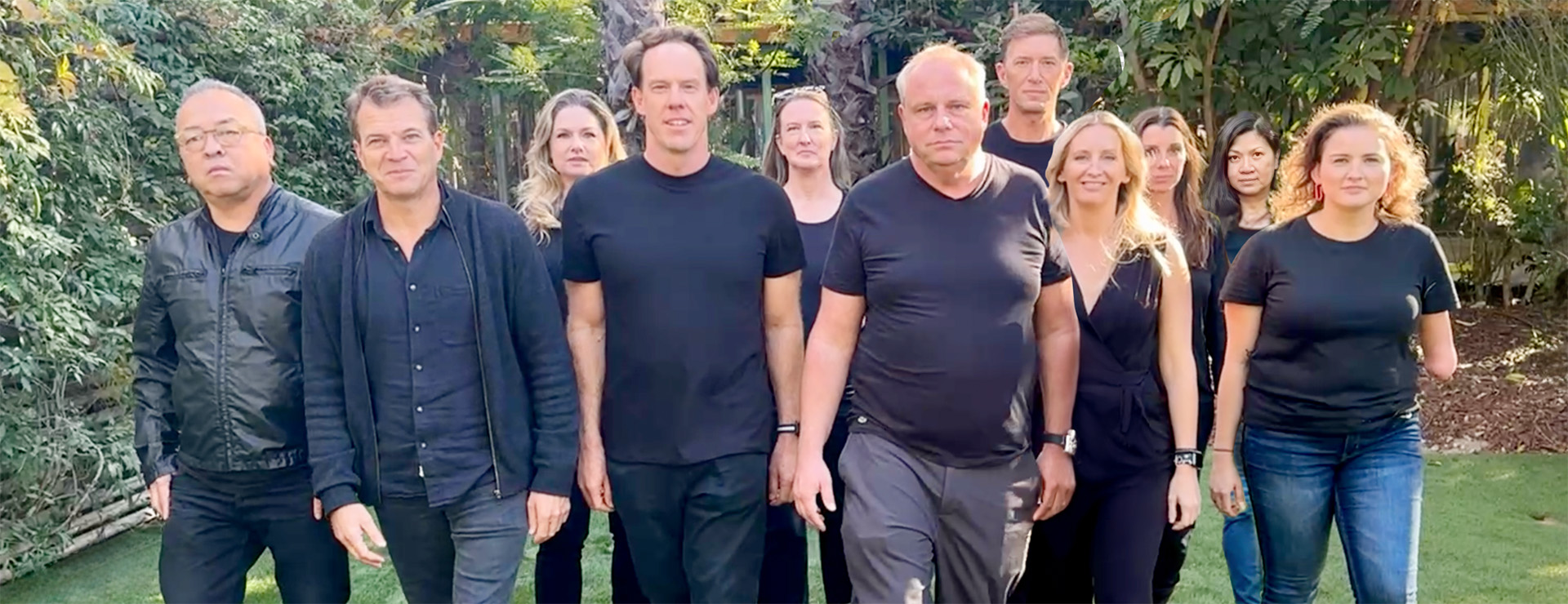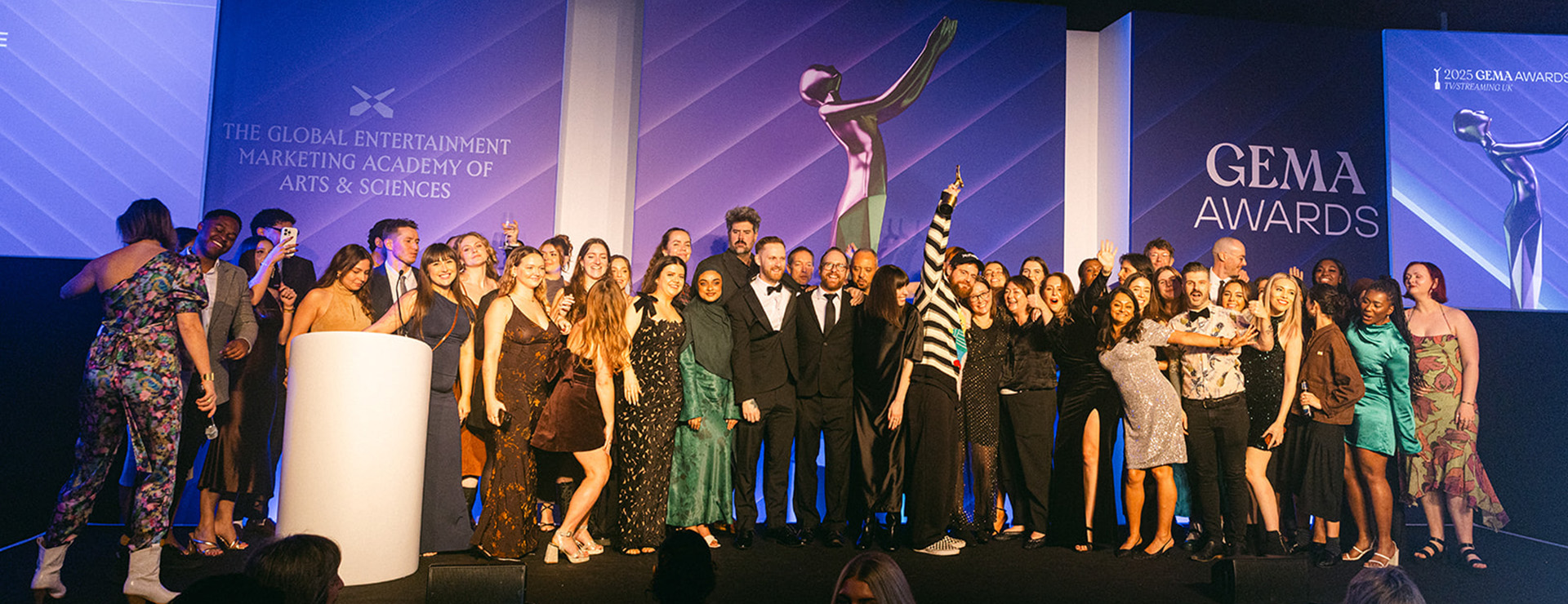
Kjetil Njoten, global head of creative at IMAX, oversees the marketing of 30 to 40 Hollywood titles a year on IMAX’s giant screens with reverberant sound, but that’s hardly all he does. IMAX releases more than 60 local language titles every year and the technology is in 90 countries and territories around the world – and growing – with more than 2,000 theaters. IMAX is also expanding its brand by releasing alternative content, such as remastered concert and classic films. On top of that, he oversees brand and digital creative initiatives as well as corporate creative needs.
Spotlight: In my mind, IMAX has a very specific brand, so you’ve done a good job of imprinting on me the idea that with IMAX you expect to get a higher level of movie technology, a better level of sound and that the experience might be more interactive.
Njoten: Since COVID, it's never been harder for studios to convince people that this is a movie they need to see on a big screen, as opposed to waiting six weeks or three months until they can watch it at home. Where I think IMAX has really capitalized on that is that we are the furthest away from the at-home experience you can get. I think we’ve become a really great tool for studios. When they put those four letters on their posters, it signals to audiences that this is a movie that's better viewed in the theaters than it is at home and so it feels like an event.
A lot of the work we’ve done over the last four years is working with the studios to highlight how IMAX is a tool to help them win, and in that process, we also win. Time and time again, it has been proven both to us and to studios that that works.
This year, we had our highest-ever index of box-office share. On opening weekends over the summer, movies released on IMAX – which included Mission Impossible: Final Reckoning, F1, Marvel’s Thunderbolts and Marvel’s Fantastic Four – had an average of almost 17% of the box office on less than 1% of the screens. It’s become salient in people’s minds that IMAX is the best way to see a big movie.
Spotlight: When you are working with filmmakers to produce a movie using IMAX cameras and technology, how does the effort all come together so that you’re all walking the same path?
Njoten: The filmmaker piece is not something that sits on my remit, but on movies like Christopher Nolan’s upcoming The Odyssey or Denis Villeneuve’s Dune, Dune 2 and coming soon, Dune 3, or Ryan Coogler’s Sinners, IMAX is involved early on.
For The Odyssey, Nolan challenged IMAX to develop new camera technology to allow him to shoot the entire movie on our film cameras. He has very high standards, so the fact that IMAX was able to give him the tools he needed to achieve his goal speaks volumes about IMAX’s commitment to – or obsession with – quality.
IMAX is very much woven into the fabric of filmmaking. We've always been a company that sees ourselves as filmmaker-first. The technology we have – from our cameras to our projectors to our sound systems and our post-production process – exists to help directors enhance their vision. Ultimately, our goal is that the IMAX version of a movie is the director's preferred version. That's why Nolan always says, ‘IMAX is the best way to see my movies.’
Our screens are taller, so you’re getting to see significantly more picture from top to bottom and as an audience member you feel much more immersed. That’s the same with our sound. Our speakers are bigger and more powerful. Everyone says IMAX is loud – and it is – but it’s not loud for the sake of being loud. We are the only ones who play all movies at the volume the director signs off on. And because our speaker technology allows you to play lower frequency sounds at full volume, you can feel that bass in your chest. Coupled with those giant screens, you are seeing the best pictures on the biggest screens with the best speakers the way the director intended. It becomes a truly unique experience. And that’s before we start factoring in our best-in-class Laser projectors.
Spotlight: You said that IMAX got 17% of box office on 1% of screens over the summer. I wonder, because while you've got directors like Nolan using IMAX technology and pushing people to see the movies on IMAX, there are not a lot of IMAX screens per capita. Do you think that results in a push for more IMAX screens in more markets?
Njoten: We work very closely with our sales team. The last couple of years have been hugely successful for them, because as people see IMAX doing better and better and outperforming the market, partners who already have a lot of IMAX theaters want more. Partners who don't have any IMAX screens want to add some. For us, it's always about making sure we do so responsibly, because there are a lot of things we have to pay attention to, like zoning. In simplest terms, if an AMC includes an IMAX, we can't open an IMAX one block down the road, because then they are kind of cannibalizing each other.
While there are still domestic growth opportunities, a lot of our growth is taking place internationally where, in many markets, there's still an under-saturation of IMAX theaters. So there are a lot of areas where there's more of a push. But globally, we're doing very well. Great box office results make it easier for our sales team to sell more theaters, which in turn helps fuel further box office growth.
Spotlight: I recently watched Mission Impossible: Final Reckoning and when I was looking up the key art, there was a lot of IMAX promotion on it. Is that something the studios handle on their own or is that something you and your team work with the studios on?
Njoten: When we work with studios, they do the creative work, giving us options for art and we’ll have input on that. Mission Impossible: Final Reckoning was a ‘Filmed for IMAX’ title and it was really important for both Paramount and Tom Cruise that IMAX was a big part of the overall marketing for that film. There were multiple global premieres of Mission Impossible and most of those were held wherever there was an IMAX theater in that city. They did stunts with Tom Cruise standing on top of the BFI IMAX in London and they captured drone footage of that:
Tom Cruise is such a proponent of the theatrical big screen experience. He’s all about experience and thrill rides and he understands that IMAX dials up that volume. That movie feels so much more immersive on IMAX. It feels so much like you're right there with him, and I think in a really amazing way.
Spotlight: Switching gears, you recently lent some time to GEMA’s GUIDE mentorship program. I know that transformation and growth are important to you. What advice did you give to the group?
Njoten: For the GUIDE program, I talked about how we are bombarded with so many messages from advertisers and marketers every single day. I think it’s somewhere between 5,000 and 10,000 depending on where you live in the world. That means you don’t even notice 98% of messages. They’re just out there and they’re kind of invisible.
In this world, it’s so important to create work that stands out. What are some of the ingredients you need to do that? There’s the importance of emotion, of doing something that’s very different, of doing the opposite of what everyone else is doing. We also talked a lot about the importance of brand and branding, making sure your brand has a clearly defined voice and then knowing what your brand is and who it’s for, knowing what you believe in and what you’re against. Those kinds of things become so important because that’s what allows you to create standout work that is consistent and allows you to become more easily recognizable.
Lastly, we talked a lot about how to get people to buy into those ideas in a corporate organization. Often having a great idea is the easy part, but getting someone to buy into it can be the hard part. I also shared what I’ve learned over the years in terms of how best to position the work and how best to build partnerships and trust in order to allow you to take those big swings.
Spotlight: What was some of your advice in terms of how you get those ideas sold up your own chain or in your own organization?
Njoten: I’ve done a lot of transformation work over the years where I’ve walked into situations where, for one reason or another, the creative team hasn’t been able to deliver work at a high enough level. I think the common denominator for a lot of those situations is that there isn’t enough collaboration between the creative marketing team, the marketing team, and the product and sales teams, so the creative team doesn’t have an in-depth understanding of what is important to their business partners.
What I’ve always tried to do is break down those silos. I spend a lot of time with the business partners to understand what keeps them awake at night. What are the goals they have to achieve? I think it’s a lot easier when you can draw a direct line between their problem and their goal and your creative solution. The shorter and more direct that line is, the more opportunity there is for success.
I am also a big believer in getting creative involved super early in the process, often even before the briefs are written. In return for that involvement, I always like to involve partners in the creative solutions really early as well. I’m a big fan of showing everyone our ugly babies. If you show them early enough, you can have some of those big, scary conversations early on. I think early involvement helps people get more comfortable with the idea. Even if an idea makes them uncomfortable initially, they might get more excited by it later because they’ve been nursed along the way and their worries have been calmed.
Spotlight: Yes, I think it’s better to not show up and shock the crap out of everyone. It’s better to onboard them a bit.
Njoten: That kind big tah-dah moment is wonderful when it works, but very often it doesn’t and now you’ve spent so much time on it and you love it but they don’t. Whereas when you show people things early, you can throw stuff out and tweak other stuff. It’s all very malleable. It’s about partnership, trust and communication. The more you do that, the more you can go in together and say, ‘we all believe this is the right thing to do.’ If it makes you feel uncomfortable, at least you can help each other overcome that discomfort.
Spotlight: Do you think that the ability to receive feedback is a learned skill?
Njoten: Yes, I do think creatives have to toughen their skin to take feedback. Creators are very unique compared to most other kinds of marketing functions, in that everything we do, we get critiques. You have to harden yourself to that, and I think you do naturally over the course of the first couple of years of your time in the industry.
"What becomes really important is to develop that instinct of knowing when to push back or to pivot so that at the end of the day, you create something that you feel proud of. If creatives become too deferential, their work becomes average and then everybody’s wasting their time because average work is invisible work."
That’s always the battle – how do you determine the difference between a good note that will make the work better and a bad note that isn’t relevant. Trust, partnership and conversation through the process will normally eliminate bad notes. I think those are things people just have to learn through experience. That’s a big part of my job. Any kind of creative leader is making sure that their creative teams don’t become doormats and that we work with our partners, not for our partners. When you're seen as a partner, you work together and you’re equals in the same endeavor. When you see each other as teammates and as people you rely on in order to succeed, the conversations change radically.

Spotlight: What have been some of your favorite projects that you've done at IMAX in the past year or so?
Njoten: I really loved F1, it's such a great spectacle. It was just such a ‘grab a big popcorn and a big drink and just sit there and watch it’ type of movie. It was just a great ride.
I think we've done some really great concert films as well. Last year, we remastered a Queen concert that had been shot in 1981, Queen Rock Montreal, which was amazing. When they play 'Bohemian Rhapsody' in the opening, the camera zooms in on Freddie Mercury’s face. You can see every beat of sweat, every hair of his mustache, and the emotion in his eyes for every lyric he sang. Our post-production team did such a great job in digital restoration and sound as well. It was truly spine-tingling.
Obviously, Avatar and IMAX belong together. James Cameron is an incredible director and also a visual artist.
Next year, the first movie I’m excited for is The Odyssey, which is the first movie ever to be shot entirely with IMAX film cameras. That’s going to be pretty incredible. Any Christopher Nolan movie is an unmissable theatrical event.
We’ve got Dune 3 as well, which is the final film of the trilogy from Denis Villeneuve. He’s also shooting chunks of that movie with our film camera. I think those three movies – Avatar: Fire and Ash, The Odyssey and Dune 3 – are going to be spectacular.
Spotlight: What are other things like the Queen movie that IMAX is doing?
Njoten: We have an alternative content arm. It goes back to getting people through the door on a quiet Tuesday or Wednesday. We’ve done things like a remaster of The Rolling Stones at the Max, which was shot in 1990 and 1991 over ten nights in Europe on IMAX 70 mm film cameras. We have a bunch more music stuff coming up next year.
We’re also rereleasing classic movies, like Jaws, ET and we just announced The Shining. It’s about creating a more diverse slate. Local language fare also is becoming really important. Almost a third of our box office is for local language releases. And you are starting to see that stuff perform in other countries as well, like [Japanese anime film] Demon Slayer did gangbusters in America. So we’re bringing in more local language titles, especially anime, to the U.S. We also have Japanese titles that do well in China and Europe. And we have a lot of Indian titles that perform not just in India, but also around the globe. Ramayana, the first Filmed For IMAX title, is definitely one to look out for next year.
Spotlight: How much penetration does IMAX have in other markets globally?
Njoten: I think we feel like there's a huge opportunity for us to grow our global footprint considerably in the next decade or so. We are in 90 countries around the world and we have just under 2,000 theaters. China is our biggest country in terms of theaters. We have more theaters in China than we have in the U.S. But beyond that, there are a lot of markets where we are looking to grow. We continue to grow, and continue to open theaters in new countries all the time, and also to expand our footprints in countries where we already have a presence. We are incredibly bullish about our growth!















